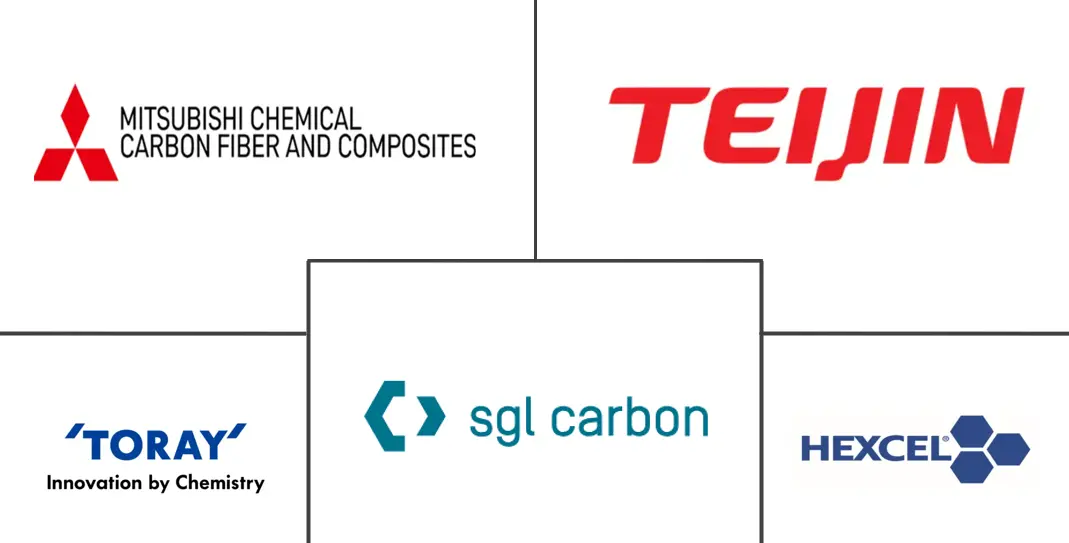Market Size of Japan Automotive Composites Industry

| Study Period | 2019 - 2029 |
| Base Year For Estimation | 2023 |
| Forecast Data Period | 2024 - 2029 |
| Historical Data Period | 2019 - 2022 |
| CAGR | 9.00 % |
| Market Concentration | Medium |
Major Players
*Disclaimer: Major Players sorted in no particular order |
Japan Automotive Composites Market Analysis
The Japan automotive composites market was valued at USD 1.77 billion in the current year and is projected to grow to USD 2.97 billion by the next five years, registering a CAGR of 9% in terms of revenue during the forecast period.
Over the medium term, Factors such as increasing demand for lightweight material from the automotive industry and growing focus on fuel economy are expected to be major drivers for the market. However, high costs associated with carbon fiber composites and glass fiber composites are hindering the growth of the market, as their usage in low-cost vehicles could drastically increase the prices of such vehicles.
Presently, composite materials, like thermoplastics and reinforced glass, have drawn the attention of carmakers, making them focus on sourcing better, tensile, and lighter components in the manufacture of automobile units.
The low recyclability of composites is also a restraint for their penetration in entry-level passenger vehicles. However, collaborations of the OEMs with suppliers (due to rising demand for fuel-efficient vehicles, growing lightweight electrical vehicle segment, and major automobile giants, like BMW and Nissan, trying to replace their existing metal parts with composite fibers) imply the scope and booming opportunity that the market is anticipated to offer over the forecast period.
Japan Automotive Composites Industry Segmentation
Composites are being considered to make lighter, safer, and more fuel-efficient vehicles. A composite is composed of a high-performance fiber (such as carbon or glass) in a matrix material (epoxy polymer) that, when combined, provides enhanced properties compared with the individual materials by themselves. The Japanese automotive composites market is segmented into material type and application. Based on the material type, the market is segmented into thermoset polymer, thermoplastic polymer, carbon fiber, and glass fiber. Based on the application, the market is segmented into structural assemblies, power train components, interiors, exteriors, and other applications. For each segment, the market size and forecast have been done based on the value (USD).
| By Material Type | |
| Thermoset Polymer | |
| Thermoplastic Polymer | |
| Carbon Fiber | |
| Glass Fiber | |
| Other Material Types |
| By Application Type | |
| Structural Assembly | |
| Power Train Components | |
| Interior | |
| Exterior | |
| Other Application Types |
Japan Automotive Composites Market Size Summary
The Japan automotive composites market is experiencing significant growth, driven by the increasing demand for lightweight materials in the automotive industry and a growing emphasis on fuel efficiency. As vehicle weight directly impacts driving dynamics and fuel consumption, the automotive sector has been focusing on reducing weight for decades. The use of advanced materials like carbon fiber and glass fiber composites is becoming more prevalent as manufacturers seek to enhance fuel economy and meet stringent emission regulations. Despite the high costs associated with these materials, collaborations between original equipment manufacturers (OEMs) and suppliers are fostering innovation and expanding the market's potential. The automotive industry's shift towards electric vehicles and the replacement of metal parts with composites further underscore the promising opportunities within this market.
Japan's position as a leading car exporter and its adherence to strict emission standards in regions like North America and Europe are propelling the adoption of composites in vehicles. The market is characterized by the involvement of key players such as Hexcel Corporation, Mitsubishi Chemical Carbon Fiber and Composite Inc, and SGL Carbon, who are actively developing new composite materials to reduce vehicle weight. The demand for carbon fiber is particularly strong due to its high strength-to-weight ratio and other advantageous properties. As major automakers increasingly integrate composite materials to comply with environmental regulations and enhance vehicle performance, the Japanese automotive composites market is poised for substantial growth in the coming years.
Japan Automotive Composites Market Size - Table of Contents
-
1. MARKET DYNAMICS
-
1.1 Market Drivers
-
1.2 Market Restraints
-
1.3 Porter's Five Forces Analysis
-
1.3.1 Bargaining Power of Suppliers
-
1.3.2 Bargaining Power of Buyers/Consumers
-
1.3.3 Threat of New Entrants
-
1.3.4 Threat of Substitute Products
-
1.3.5 Intensity of Competitive Rivalry
-
-
-
2. MARKET SEGMENTATION (Market Size in Value - USD)
-
2.1 By Material Type
-
2.1.1 Thermoset Polymer
-
2.1.2 Thermoplastic Polymer
-
2.1.3 Carbon Fiber
-
2.1.4 Glass Fiber
-
2.1.5 Other Material Types
-
-
2.2 By Application Type
-
2.2.1 Structural Assembly
-
2.2.2 Power Train Components
-
2.2.3 Interior
-
2.2.4 Exterior
-
2.2.5 Other Application Types
-
-
Japan Automotive Composites Market Size FAQs
What is the current Japan Automotive Composites Market size?
The Japan Automotive Composites Market is projected to register a CAGR of 9% during the forecast period (2024-2029)
Who are the key players in Japan Automotive Composites Market?
SGL Carbon, Toray Industries, Inc., Teijin Aramid B.V., Mitsubishi Chemical Carbon Fiber and Composites, Inc. and Hexcel Corporation are the major companies operating in the Japan Automotive Composites Market.

